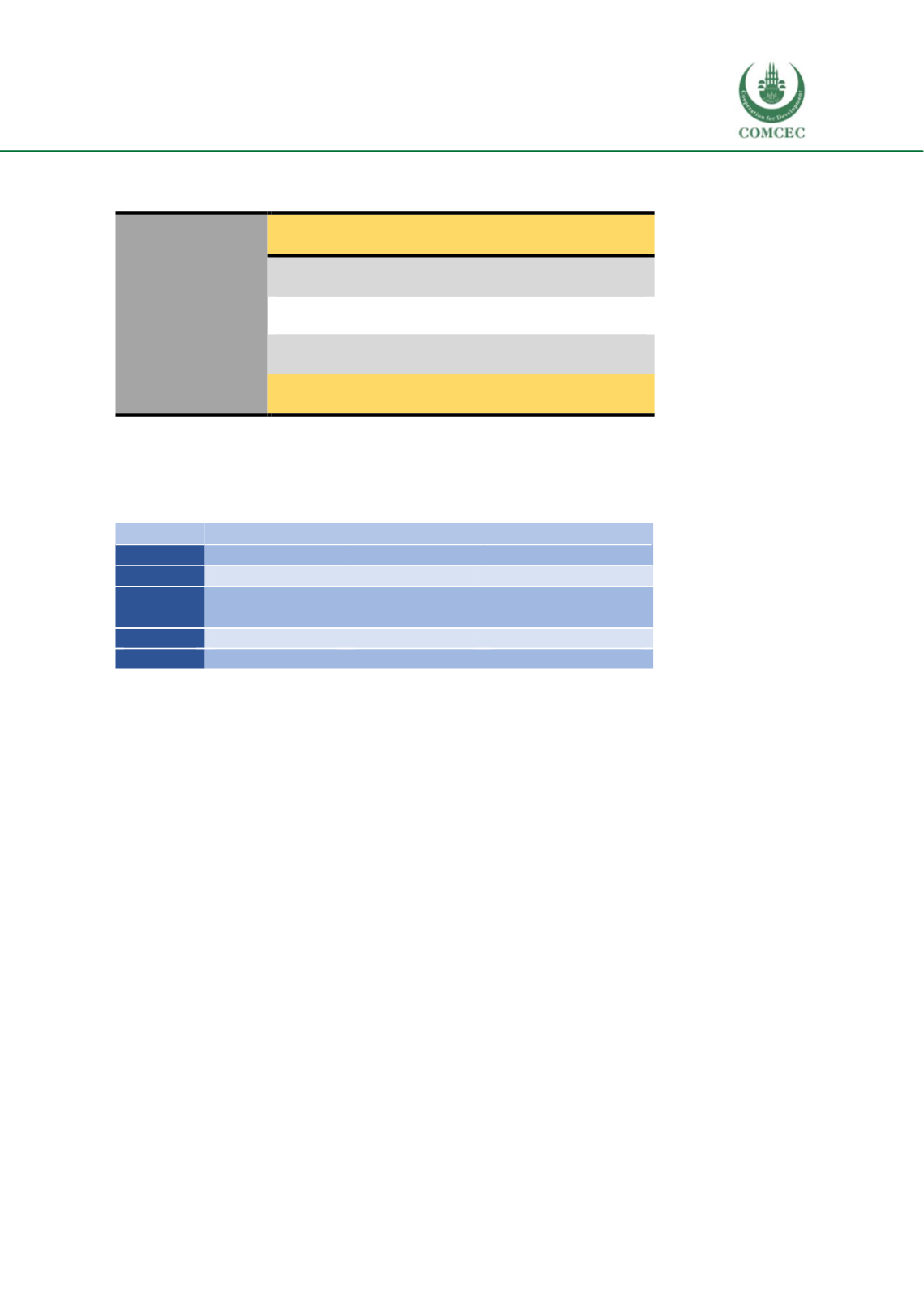

Skills Development: Vocational Education
in the Islamic Countries
113
The UACE graduates have the following five pathways to choose:
Table 5.3: UACE pathway
UACE Graduates:
Two-year course from Uganda Technical College
Any courses from departmental training
Courses from Uganda College of Commerce
Two-year course in a National Teachers’ College
Directly to Universities
4.
Current Enrolment (Students)
: The total no of students’ enrollment in different yearswhich
provide a clear trend of BTVET, Uganda.
Table 5.4: Enrollment trends of Uganda BTVET
Year
Male
Female
Total Enrollment
2106
29567
15675
45242
2015
26338
14492
40830
-------
-------
----
----
---
---
---
---
2008
17366
7896
25262
2007
15568
6197
21763
5.
Teaching Strategy
: The findings of this study reveals that TVET institutions in Uganda focus
more on skill training (skilled focused teaching) than theoretical knowledge (lecture method).
Therefore, teachers engage students in activities related to gain desired skills.
6.
Quality assurance
: The organized quality assurance unit in TVET sectors is largely absent
(TVET, 2014). However, the importance of this unit is well understood by the Government of
Uganda (GoU). Therefore, the GoU identified two areas for ensuring quality assurance:
Introduce an accreditation system for TVET providers;
Introduce an internal qualitymanagement system in TVET institutions;
7.
Social recognition /Peoples’ perceptions about TVET sector
: In 2007 the enrolment rate
of students in technical education is 21763, which is increased to 45242 in 2016. That is, within
10 years the number of students in TVET sectors has become doubled. So the importance and
significance of TVET is being realised and acknowledged gradually in Uganda.
8.
Vision/ Mission of TVET
: The general mission of TVET sector of Uganda is to ensure that the
country (trainees and stakeholders) acquires the skills so that the country will able to increase
productivity and income (TVET, 2014). The mission of TVET Uganda focuses on the following
specific objectives:
Make TVET relevant to productivity development and economic growth;
Increase the quality of skills provision;
Increase equitable access to skills development;
















